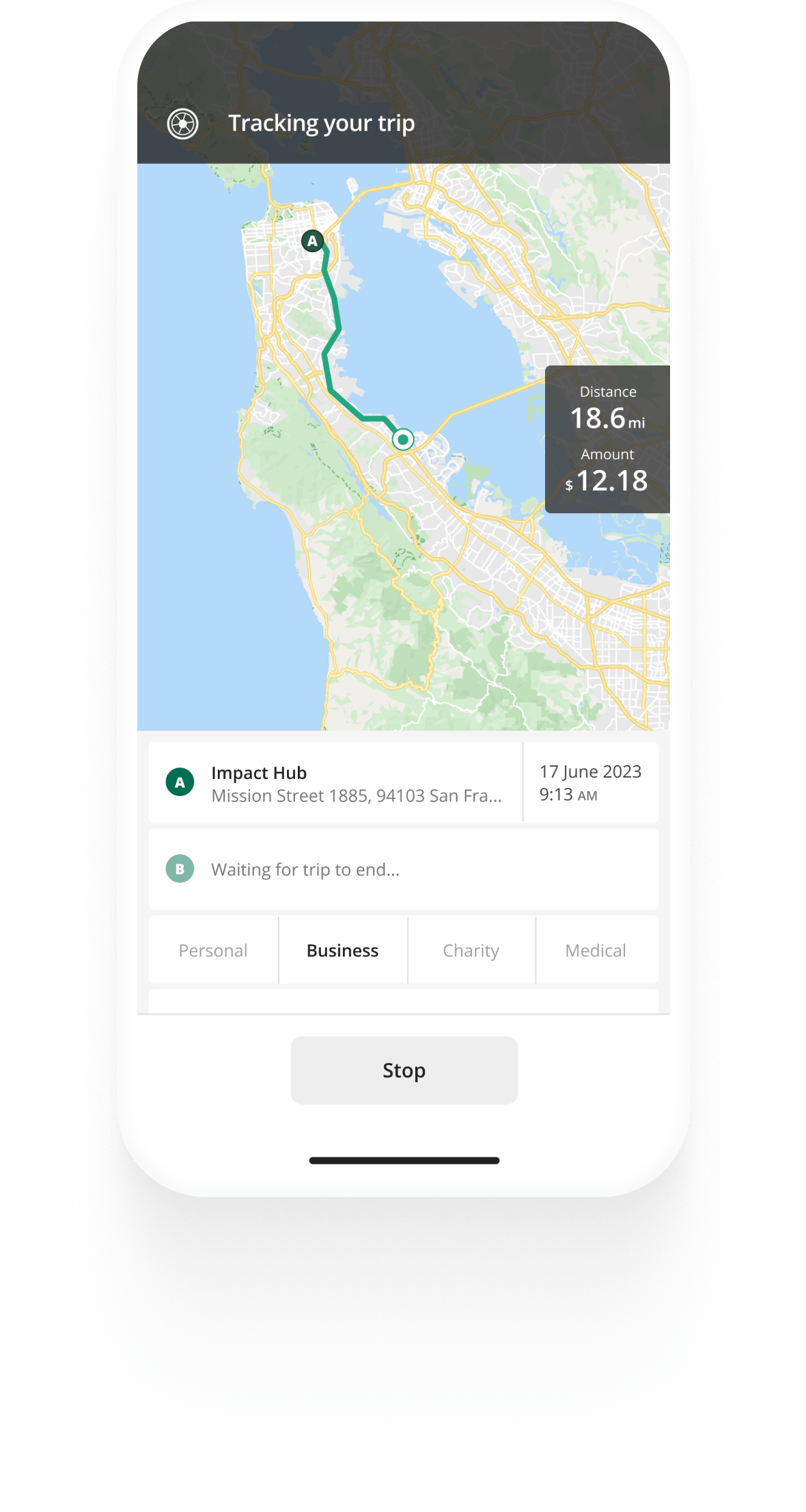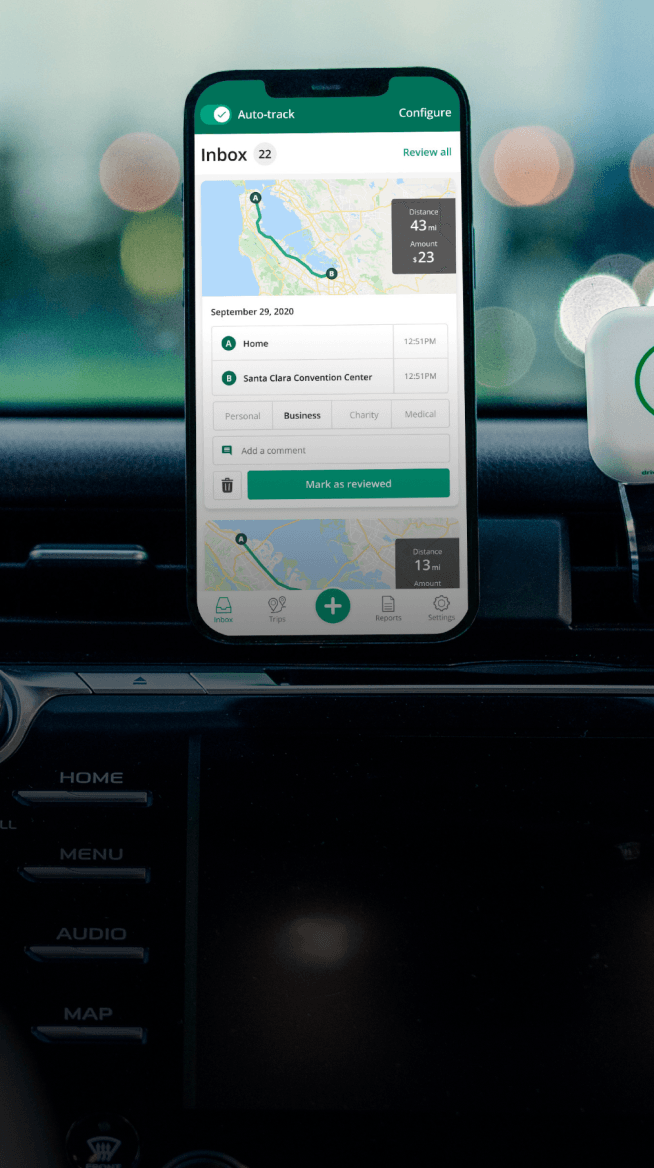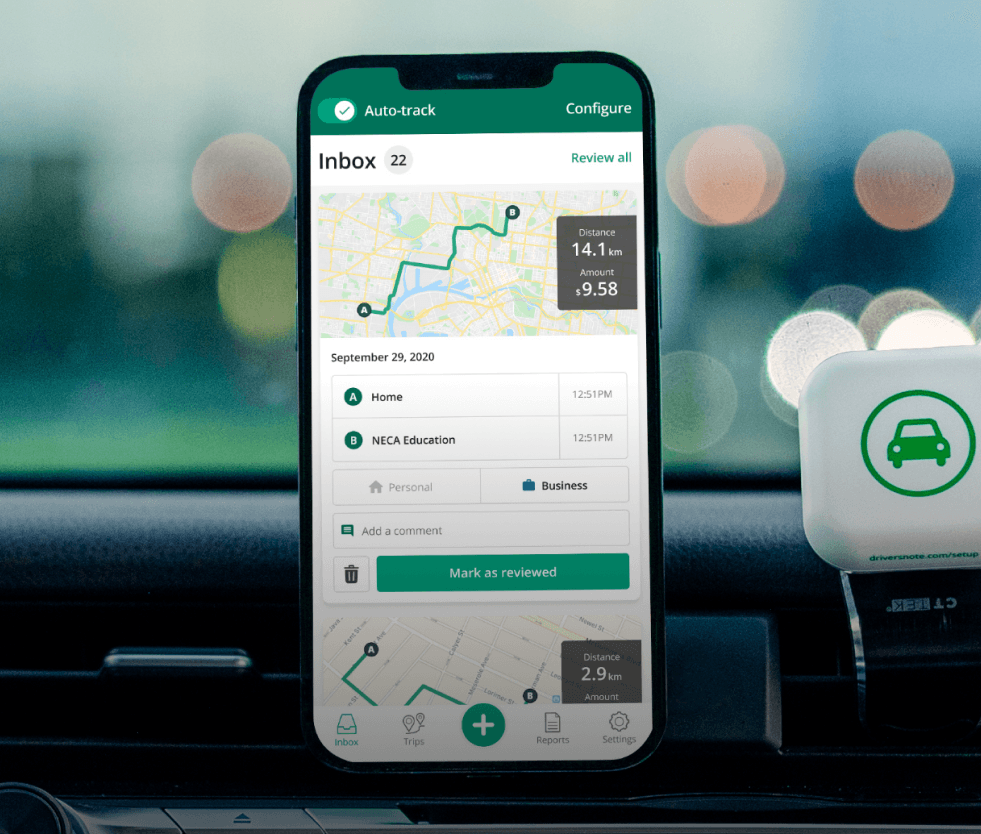Track mileage automatically
Get started.svg)
How To Write Off a Car For Business
Using your private car for business? Then, you can write off your car as a business expense. Whether your vehicle is used solely for business or a mix of business and private, you are likely eligible for a tax deduction that can lighten your tax burden.
Under IRS regulations, there are two ways for business owners to write off a car: The standard mileage rate and the actual expense method. In this article, we’ll dive into both.
Standard mileage rate
The standard mileage rate allows business owners to write off their vehicle expenses based on the number of miles they drive for business-related purposes.
The 2025 IRS business mileage rate is 70 cents per mile.
It is important to track the business miles you travel to claim the correct amount to write off and provide the IRS with proof in case your business is audited.
The best way to do this is with a mileage tracking application such as Driversnote, which can automatically track mileage. Driversnote allows you to track your miles automatically using a motion detector, so you won’t have to open the app. This makes it effortless to claim an accurate deduction when you file your taxes.
The standard mileage rate is generally the easiest option for small business owners because it incorporates all the expenses related to owning a vehicle, including fuel, maintenance, and depreciation. When coupled with effective mileage tracking, this produces an easy way for business owners to write off their cars.


Mileage tracking made easy
Trusted by millions of drivers
Automate your logbook Automate your logbook

Automatic mileage tracking and IRS-compliant reporting.
Get started for free Get started for freeActual expense method
The second way to write off a car is to claim actual expenses, which means all the costs associated with owning and maintaining your vehicle, such as fuel, repairs, insurance, and car payments.
However, before claiming all of your vehicle expenses, remember that if you use your vehicle partly for personal reasons, you can only claim the percentage of expenses attributable to business use.
This means you must calculate the percentage of travel attributable to business use versus personal use.
You do so by dividing the total number of business miles by the total number of miles driven. It is important to keep an accurate record of business mileage for this as proof for the IRS.
Once you've calculated your business use percentage, you may multiply this by your actual vehicle expenses to calculate your deduction.
An example of the actual expense method
- You use your car for business purposes 75% of the time.
- Depreciation for a car is, generally, five years (according to the IRS).
- This means you can claim 75% of the cost of the car as a deduction over five years in addition to other associated expenses.
Depending on the vehicle you purchase, you may also qualify for a Section 179 tax write-off for business vehicles, which allows you to deduct part or all of the purchase price the same year you purchase and place the car into service.
Remember adequate record-keeping
According to the IRS, record-keeping is essential no matter how you decide to write off a car.
“The law requires that you substantiate your expenses by adequate records or by sufficient evidence to support your own statement,” IRS, Topic no. 510.
Keeping track of income and expenses for a small business can be challenging. Still, automatic mileage tracking apps like Driversnote simplify the process by recording mileage and generating tax-compliant forms for deductions.
Dive into self-employed mileage deduction rules and learn how to claim mileage on your taxes in five easy steps.
FAQ

Tired of logging mileage by hand?
Effortless. IRS-compliant. Liberating.
Top posts
Related posts
Section 179 Tax Write-offs for Business Vehicles
Latest update: February 24, 2025 - 5 min read
Learn how the Section 179 tax write-off works when you buy a vehicle that you use for business at least 50% of the time.
How To Claim Self-Employed Taxes
Latest update: July 17, 2024 - 5 min read
Here’s what self-employed and independent contractors need to know about calculating income tax and how to file IRS tax returns.
How To Claim Your Mileage On Taxes In 5 steps
Latest update: February 11, 2025 - 5 min read
We've made claiming mileage on taxes simple - follow these five steps to compliantly claim business mileage from the IRS in 2025.
.svg)
